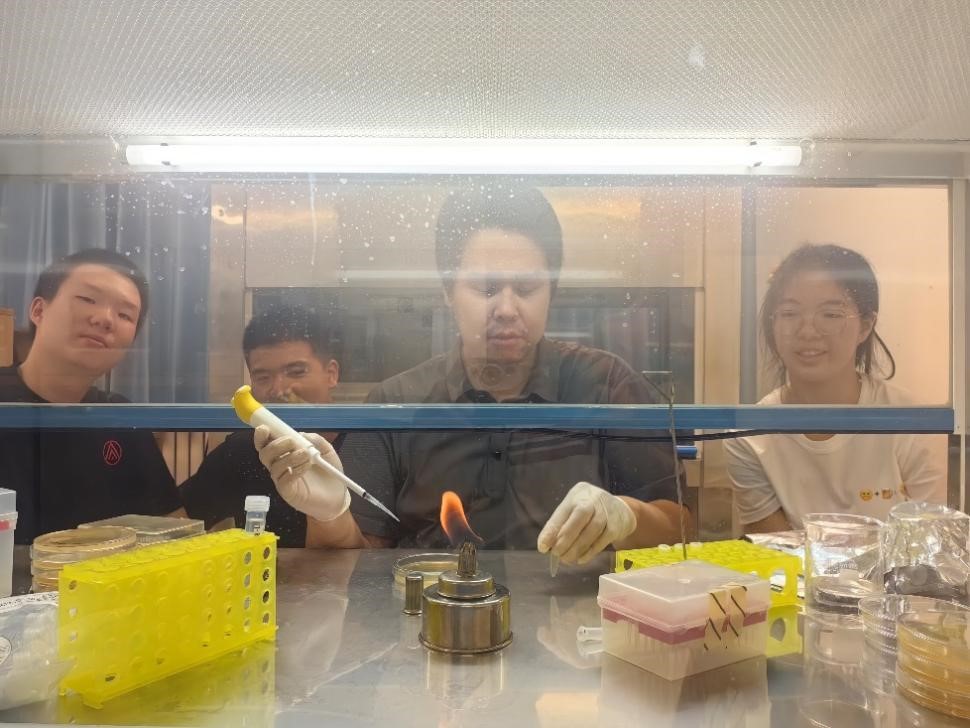SAFETY & SECURITY

Biosafety Principles
Biosafety is at the core of every iGEM project, and it forms the foundation of all our laboratory work. For Team EHSBNU, ensuring the safety of both people and the environment has always been a top priority.
From project design to daily practice, we carefully assessed possible risks, followed laboratory training guidelines, and complied with relevant biosafety regulations. This approach ensured that our research was conducted responsibly and aligned with iGEM’s safety and ethical standards.
Safe Parts Selection
We avoided using any biological parts that could pose potential threats to humans, plants, animals, or the environment. Our use of Sf9 cells is highly secure since they can only survive in specific insect cell media and gradually lose recombinant plasmids during cell passaging.
Additionally, we avoided hazardous reagents wherever possible. For example, we used loading buffer containing GelGreen instead of more toxic DNA dyes, and ensured minimal skin exposure when handling any potentially harmful substances.
Safe Laboratory Practices
Before beginning our wet lab work at the Chinese Academy of Agricultural Sciences (CAAS), our PI, Wei Fang, guided us through basic bioengineering experiments using E. coli. This training helped us establish fundamental laboratory safety habits, such as securing centrifuge lids and balancing samples before spinning.

Our instructor demonstrating standard plating procedures of E. coli.
We also carefully reviewed the BactoBac expression system protocol and strictly followed additional rules in the cell culture room under the supervision of our advisor, Jiaying Yang. Personal protective equipment (PPE) regulations included wearing gloves and shoe covers before entering, and additional gear when necessary.
Documentation & Risk Management
Collaboration & Compliance
We regularly consulted with experienced researchers to assess potential risks and refine our safety protocols. Our safety standards comply with national laws and institutional guidelines, including the Biological Security Law of the People’s Republic of China and the Laboratory Safety Regulations for Educational Institutions.